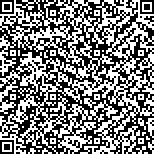卡尔曼滤波结合空间分布模型的ZigBee水质监测方法研究
2022,30(3):67-73
摘要:为了解决常规水产养殖过程中人工成本高、数据采集误差偏大的问题,并实现及时了解关键参数空间分布情况,达到为水产养殖提供决策信息的目的,设计了基于无线传感器网络的水产养殖水质参数监测系统,该系统采用ZigBee无线通信技术构建传感器网络,主要监测水温、pH值、DO三种水质参数指标,并利用MATLAB平台,将卡尔曼滤波算法与线性内插值法相结合,实现水质参数的优化与空间分布四维模型的构建。通过选取分布空间中不同点的参数数据与实际测量的数据比较,温度、pH值和DO平均相对偏差分别为3.18%、2.89%、1.59%。研究结果表明通过卡尔曼滤波优化与线性内插值法构建空间分布模型,能准确掌握养殖池整体水质参数动态变化的信息,对养殖池的水环境管理有一定的参考价值。
关键词:水产养殖;水质参数监测;无线传感器网络;卡尔曼滤波;空间分布模型
Kalman filtering combined with spatial distribution model of ZigBee water quality monitoring method research
Abstract:To eliminate the disadvantages of high costs on labor, the deviation of data measurement and to achieve timely understanding of the spatial distribution of key parameters to achieve the purpose of providing decision-making information for aquaculture, a wireless sensor network-based aquaculture water quality parameter monitoring system is designed, which uses ZigBee wireless communication technology to build a sensor network, mainly monitoring water temperature, pH, DO three water quality parameters indicators, and the use of MATLAB platform, the Kalman filtering algorithm and linear interpolation method combined to achieve the optimization of water quality parameters and the construction of a four-dimensional model of spatial distribution. By comparing the parameter data of different points in the selected distribution space with the actual measured data, the average relative deviations of temperature, pH and DO were 3.18%, 2.89% and 1.59% respectively. The results show that the construction of spatial distribution model by Kalman filtering optimization and linear interpolation method can accurately grasp the information of the dynamic changes of the overall water quality parameters of aquaculture ponds and can have a reference value for the management of the aquatic environment of the breeding pond.
Key words:Aquaculture; Water quality parameter monitoring; Wireless sensor networks; Kalman filtering; Spatial distribution models
收稿日期:2021-09-14
基金项目:基于相似日选取和分解-预测-重构模式的水产养殖溶解氧预测研究
